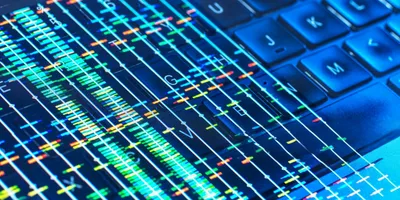LMU molecular biologist Gunnar Schotta decodes the epigenetic silencing of problematic retroviral gene sequences.
While each cell contains the complete genetic blueprint of an organism, chemical marks on the DNA -- so-called epigenetic modifications -- control which genes are active when and where.
A team led by molecular biologist Professor Gunnar Schotta from LMU's Biomedical Center has now investigated how SETDB1 works.
This enzyme is able to silence specific DNA sections by epigenetically modifying histone proteins that package the DNA.
These modifications ensure that the DNA is densely packed as heterochromatin, which reduces the accessibility of the genes.
"We're especially interested in DNA sections that have been inserted by retroviruses in the course of evolution and then inherited," says Schotta.
Such endogenous retroviruses (ERVs) often contain binding sites for transcription factors -- that is, proteins that read and activate genes.
Although these sequences are normally inactive, they can affect gene activity under certain circumstances -- hence their name of cryptic enhancers.
SETDB1 prevents retroviral sequences from becoming active by appending an epigenetic mark called H3K9me3 to the respective histones. "Surprisingly, our study shows that although the mark does not block the binding of transcription factors to these sites, it does suppress their activity," says Schotta. Without SETDB1, this suppression is lacking, leading to abnormal gene expression in the vicinity of these cryptic enhancers. This impairs the formation of blood cells by disrupting the differentiation of hematopoietic stem cells, inducing excessive production of myeloid and red blood cells, and inhibiting the formation of B and T immune cells. "Our results clarify how important the regulation of cryptic enhancers is for controlling blood cell formation and cast a new light on the role of retroviral elements as potential disruptive factors in gene regulation," concludes Schotta.
-Note: This news releases was originally published by Ludwig-Maximilians-Universität München. As it has been republished, it may deviate from our style guide.











